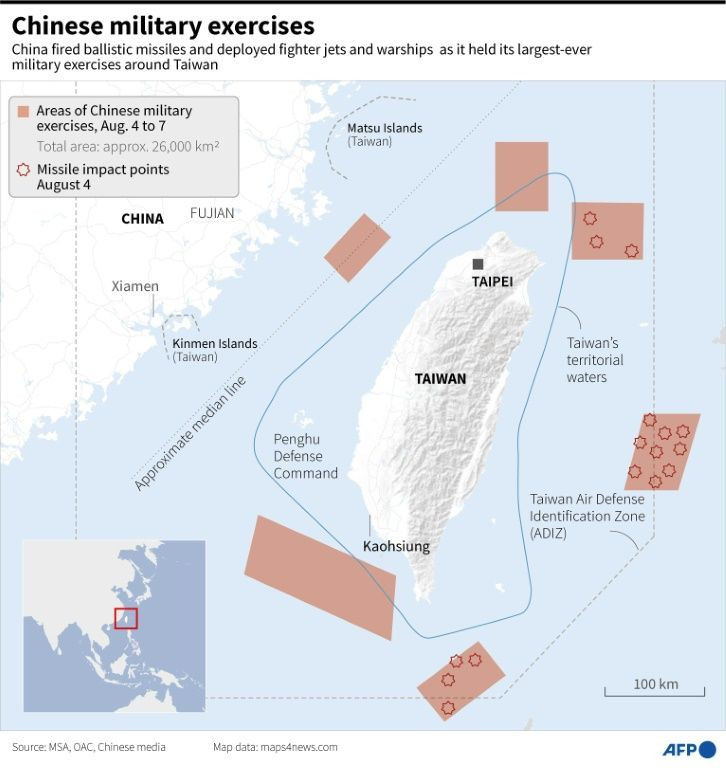Japan Will Struggle To Evacuate Its Citizens From Taiwan, China If War Breaks Out: Report
KEY POINTS
- The wargame simulations proved Japan lacked the mechanism to swiftly evacuate its nationals
- Declaring the landing on the Senkakus as an armed attack would put Japan at war with China
- Japan links Taiwan with its own security and believes any conflict would spill over to its territory
Japan would struggle to evacuate its citizens from both Taiwan and China in the event of an armed conflict between the mainland and the island, according to a wargame simulated by a Tokyo-based think tank. China's recent wargames, which saw PLA missiles falling in waters controlled by Japan, had triggered Tokyo with the Defense Ministry calling the act "a serious threat to national security."
The wargame simulation held by Japan Forum for Strategic Studies last Saturday and Sunday envisioned a scenario wherein Chinese propaganda triggers clashes in Taiwan between the pro-independence faction and the pro-unification camp in 2027. As per the scenario, Taiwan's president is attacked, and Chinese special forces land on the Japanese-administered Senkaku Islands, a bone of contention between Japan and China for decades, reported Nikkei Asia.
The conflict would prompt China to launch ballistic missiles at Taiwan and Japan to urge its nationals to leave China and Taiwan. But, the tensions would keep the Japanese away from boarding planes or ships.
Such a scenario would leave Japan in a fix, the simulation proved. Japan now faces the challenge of safely evacuating the 1,500 Japanese stranded in Taiwan and the 110,000 Japanese remaining in China. Besides, there is the dilemma of whether to declare the landing on the Senkakus as an "armed-attack situation." If Japan does so, it would be at war with China. Then, there would be the risk of China shooting down Japanese plans to evacuate its citizens.
Former Defense Minister Itsunori Onodera, who played the part of the prime minister in the tabletop simulation, said safe transport of Japanese is the top priority. But, lawmaker Taku Otsuka, playing defense minister, said a delay in recognizing an armed attack by China would complicate matters.
The deficiency in transport capabilities became evident during the meeting.
Another possibility discussed during the simulation was using return routes for supplies transported to front-line personnel. But, the challenge was a lack of mechanisms to launch evacuation efforts in a faster time frame. Urging the use of civilian aircraft to relocate just before the outbreak of an emergency would not be enough, the simulations proved.
The wargame assumed significance as the recent response of China to House Speaker Nancy Pelosi's visit put Japan at risk. According to reports, the show of military muscles held just 70 miles away from Japan accelerated the risk of Japan being dragged into conflict if a war breaks out.
Japan now openly links Taiwan with its own security and some section of Japan argues that if China invades Taiwan, the U.S. and Japan should defend Taiwan together.

© Copyright IBTimes 2025. All rights reserved.





















